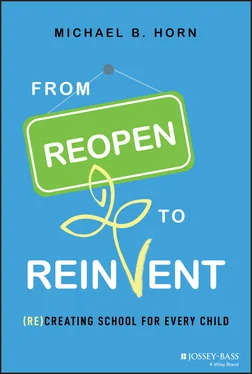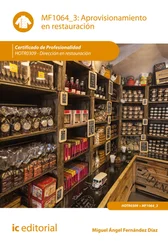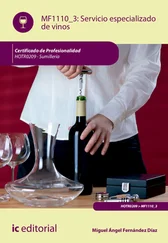Michael B. Horn - From Reopen to Reinvent
Здесь есть возможность читать онлайн «Michael B. Horn - From Reopen to Reinvent» — ознакомительный отрывок электронной книги совершенно бесплатно, а после прочтения отрывка купить полную версию. В некоторых случаях можно слушать аудио, скачать через торрент в формате fb2 и присутствует краткое содержание. Жанр: unrecognised, на английском языке. Описание произведения, (предисловие) а так же отзывы посетителей доступны на портале библиотеки ЛибКат.
- Название:From Reopen to Reinvent
- Автор:
- Жанр:
- Год:неизвестен
- ISBN:нет данных
- Рейтинг книги:4 / 5. Голосов: 1
-
Избранное:Добавить в избранное
- Отзывы:
-
Ваша оценка:
- 80
- 1
- 2
- 3
- 4
- 5
From Reopen to Reinvent: краткое содержание, описание и аннотация
Предлагаем к чтению аннотацию, описание, краткое содержание или предисловие (зависит от того, что написал сам автор книги «From Reopen to Reinvent»). Если вы не нашли необходимую информацию о книге — напишите в комментариях, мы постараемся отыскать её.
From Reopen to Reinvent,
From Reopen to Reinvent
From Reopen to Reinvent
From Reopen to Reinvent — читать онлайн ознакомительный отрывок
Ниже представлен текст книги, разбитый по страницам. Система сохранения места последней прочитанной страницы, позволяет с удобством читать онлайн бесплатно книгу «From Reopen to Reinvent», без необходимости каждый раз заново искать на чём Вы остановились. Поставьте закладку, и сможете в любой момент перейти на страницу, на которой закончили чтение.
Интервал:
Закладка:
An anecdote that played out in California several years ago shows just how flawed this system is—and how the Jeremys of the world could benefit if we would just change the assumptions.
At Santa Rita Elementary School in the Los Altos School District in California, a suburban school in an affluent area of California, a scene unfolded in 2010 not too different from scenes in schools around the country. A fifth-grade student, “Jack” (his name has been changed to protect his identity), started the year at the bottom of his class in math. He struggled to keep up and considered himself one of those kids who would just never quite “get it.” In a typical school, he would have been tracked and placed in the bottom math group—because the system is built to sort, not support, students. That would have meant that he would not have taken algebra until high school, which would have negatively impacted his college and career choices.
But Jack's story took a less familiar turn. His school transformed his class into a blended-learning environment in which students not only learned in person but also used some online learning. After 70 days of using Khan Academy's online math tutorials and exercises for a portion of his math three to four days a week, Jack's learning started accelerating. He went from a student who was well below grade level to one who was working on material well above grade level.
Of importance wasn't just the use of technology to personalize Jack's learning, but that his class rejected a fundamental and implicit assumption in today's schooling model: that just because Jack started the year behind his peers, the school should judge him as a slow learner and place him in a group out of which he couldn't move. Fixed grouping of children by perceived ability as measured by point-in-time tests and grades narrows opportunities.
What blended learning looked like in Santa Rita:
https://www.youtube.com/watch?v=q7lttowsC0Y
What Santa Rita looks like today:
https://www.youtube.com/watch?v=gU6KRKHndJI
It's Not Just Bad for the Jeremys of the World
People's typical perception is that the schooling system won't change because those who come from well-off families benefit from it. Although there's some truth to that, the system doesn't work well for students from privileged backgrounds either.
For students like Julia, who has lots of resources outside of school, we leave a lot to chance. How is an elementary school student with busy parents to know what digital resources to trust or which ones are reliable or safe? Social media and search engines expose individuals to lots of questionable information.
A long summer break probably doesn't work for Julia. She crams a bunch of her interests into the break instead of spreading them throughout the year. Why is this negative? Instead of modeling a balanced lifestyle, it pits academics, athletics, arts, and other areas of passion against each other.
It also doesn't work for her busy parents as they figure out in which camps to enroll Julia and how to make the schedules work with their demanding jobs—to say nothing of the expenses and stress they incur as they try to make sure Julia won't “miss out” on any opportunity. It will also force Julia to load up on what she's doing during the school year, which creates significant stress. 7 Creating a more flexible, balanced, year-round calendar wouldn't take anything away from Julia. She and her parents could ideally still take breaks when it made sense for them. But it could improve her baseline.
That speaks to the second bucket. Although it's likely that given Julia's family background and her resources she will perform well enough in school, that doesn't mean that she finds school engaging. She's likely bored. She may be stressed soon, too. Odds are her focus will be all around “getting by,” but it's unlikely she finds that school speaks to her or how she learns. Witness the numbers of second-semester seniors in high school who stop trying once they figure out which college they will be attending. It's also likely that Julia will graduate without a real sense of what she cares about or different pathways she could carve out for herself after high school ends. Even worse, many Julias graduate high school burned out and feeling like a failure after being rejected by the dozens of selective colleges to which they apply. One student we spoke to for my book Choosing College said he felt like he had “had a midlife crisis” after his dream school rejected him. He was 18 at the time.
This speaks to the final set of reasons why today's schooling system doesn't work for the Julias of the world. Spending her weekends doing test prep or extra math classes in the afternoons just to stay ahead in the rat race of rankings is exhausting. And it sends the unambiguous signal that schooling is a game to be won—not a pathway to help individuals prepare themselves for life. Although Julia might have the tools to play the game well, that doesn't mean it's a game worth playing. It's likely that once she enters middle school what she's really learning to do is constantly compare herself to others along a narrow set of measures. Nor is it likely that she's learning critical organizational or collaboration skills, let alone agency, self-efficacy, and self-direction. These are critical skills not to get in to college, but to successfully navigate college, the professional world, and her life. School is setting her up for a “real” midlife crisis.
A BETTER WAY FORWARD
Too often the debates around improving schooling get stuck in a zero-sum framing where for every winner there must be a loser. But the reality is that there are many more losers in our current education system than winners. By moving to a positive-sum system and a mindset of abundance rather than scarcity, we can transform that system into one that benefits both the Jeremys and the Julias of the world.
In that world, as children grow up, schools will help them discover and build their passions, understand what it takes to pursue what they want, learn how they can contribute value to society, and fulfill their human potential. Although many people are scared of change because of what they might lose, everyone has much to gain.
As schools have struggled over the past three academic years and the media has fretted about learning loss, education experts have recommended everything from summer school for all to redshirting every student. What these ideas share in common is that all students should just have more of the same type of schooling experience they've always had—a schooling experience that wasn't working.
In the years ahead, students will need personalization to meet them where they are—not just academically, but emotionally and socially as well. They will need support and help building strong relationships and networks. They will need to develop strong habits of success. We will need to think comprehensively and expansively, because if the goal is to help all students succeed in today's complex society, going back to the way things were is not an option.
That's what this book is designed to do. In the chapters ahead, we revisit many of the themes and ideas presented here in the Introduction. Unpacking them offers a way forward so that all members of society can benefit from a better, more enjoyable, and more positive schooling experience.
Chapter 1explains how to reframe the predicament in which educators find themselves as an opportunity, not a threat.
Chapter 2encourages educators to start with the end in mind—what's the purpose of schooling?
Once the goal is defined, it's easier to work backward to make sure students develop what they need to be successful. Chapter 3walks through a theory to help schools define their proper scope so that they can successfully fulfill their purpose.
Читать дальшеИнтервал:
Закладка:
Похожие книги на «From Reopen to Reinvent»
Представляем Вашему вниманию похожие книги на «From Reopen to Reinvent» списком для выбора. Мы отобрали схожую по названию и смыслу литературу в надежде предоставить читателям больше вариантов отыскать новые, интересные, ещё непрочитанные произведения.
Обсуждение, отзывы о книге «From Reopen to Reinvent» и просто собственные мнения читателей. Оставьте ваши комментарии, напишите, что Вы думаете о произведении, его смысле или главных героях. Укажите что конкретно понравилось, а что нет, и почему Вы так считаете.












